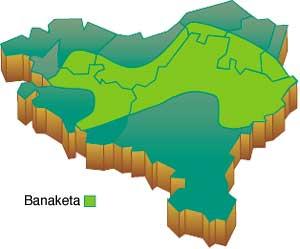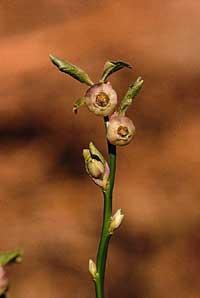Through the forest... blueberry

This small shrub or bush, 60 cm tall, is the most abundant shrub of the two species that appear within this genus limiting itself to Euskal Herria. The other is limited to the highest Pyrenean mountains (more than 1,500 m — Vaccinium uliginosum). The Cranberry is scattered throughout the territory, especially between altitudes of 500 and 1,500 meters. The acid soil has eyepieces, appearing mainly in forests and heath, although sometimes colonizes also siliceous farms.

Cranberry is a deciduous bush, with erect stems (born from a repairing rhizome) and numerous branches. Leaves, ovate, sharp and launas. Usually obtained from April to June, with small lentil flowers (greenish, dyed pink). The fruit is a rounded berry, green bacon and very sweet taste.
The genus Vaccinium has about 450 species in the temperate and cold regions of the northern hemisphere and in the tropical mountain regions, some of them cultivated for their edible fruits (V. corymbosum). As for the peninsula, there are only 3 species. In Euskal Herria two of these three appear, as indicated above.
Cranberry has been used on numerous occasions as a medicinal plant. On the one hand, they say that if the berries of this plant are eaten raw or dried, it is a good remedy to cure diarrhea and dysentery thanks to the tannins that contain these berries.
According to some scientists, a substance containing these berries prevents the growth of bacteria. It should be noted the confitura of these fruits. The leaves, for their part, point out that, taking into account their tannins, arbutines and glycosides, they would relieve diabetes, attributing to these elements astringent properties.
Technical information Blueberry Family: Ericáceos |
Buletina
Bidali zure helbide elektronikoa eta jaso asteroko buletina zure sarrera-ontzian











